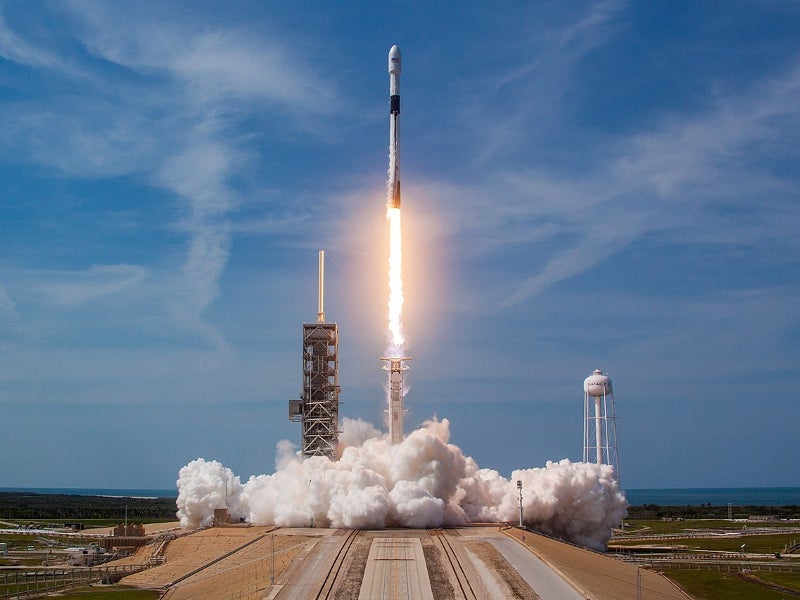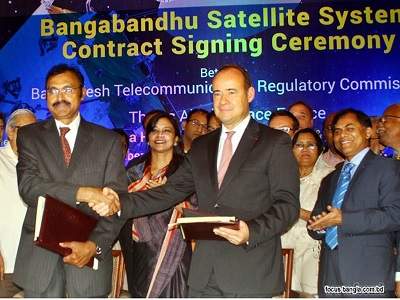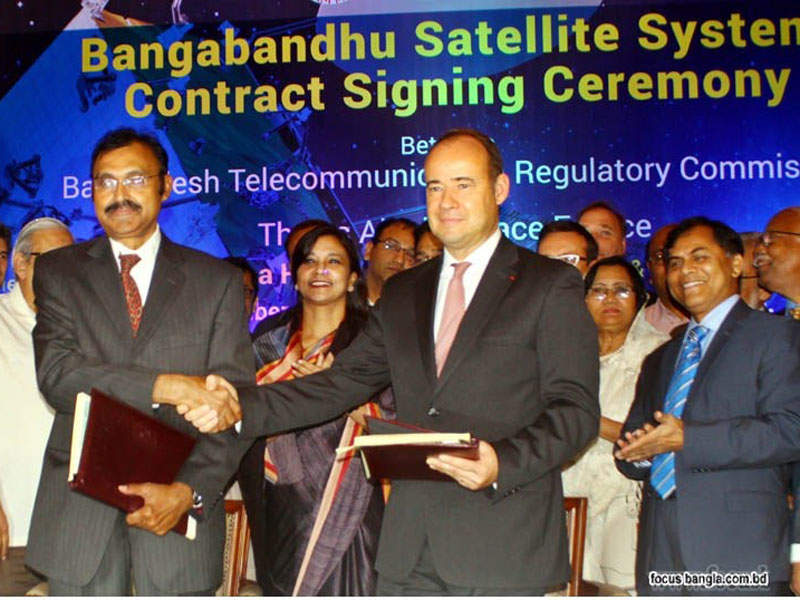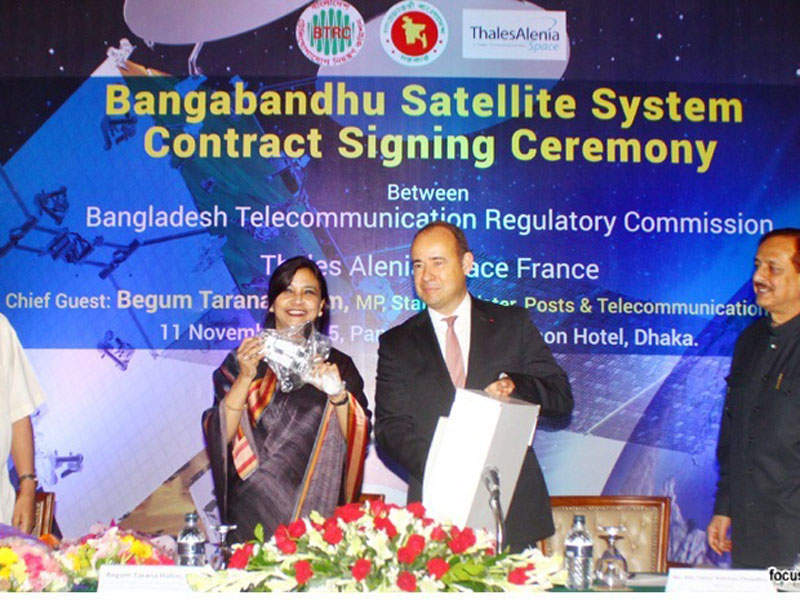Bangabandhu 1 (BD-1), the first geostationary communications satellite of Bangladesh, was developed by the Bangladesh Telecommunication Regulatory Commission (BTRC). The satellite was launched into geostationary earth orbit (GEO) in May 2018.
Located at 119.1°E longitude orbital position, Bangabandhu 1 provides broadcasting and telecommunication services to rural areas in Bangladesh. It also supports profitable services, including direct-to-home (DTH) services.
It offers Ku-band and C-band services across Bangladesh and its territorial waters of the Bay of Bengal, India, Nepal, Bhutan, Sri Lanka, the Philippines, and Indonesia.
The satellite enables the nation to save approximately BDT1.08bn ($14m) spent on satellite rents a year. BTRC also plans to launch follow-on series of BD-2 and BD-3 satellites in phases.
Bangabandhu satellite 1 design and development
Based on the Spacebus 4000B2 platform developed by Thales Alenia Space, the Bangabandhu satellite has a launch mass of 3,500kg. It includes two deployable solar arrays with batteries and has a design lifespan of 15 years.
Thales Alenia Space was selected as the prime contractor to provide turnkey systems, including design, production, and testing services for the BD-1 satellites, in November 2015. The contractual scope also includes the development of the ground segment.
BD-1 satellite’s communications module integration work was carried out at Thales Alenia Space’s plant located in Toulouse, France.
The critical design review (CDR) of BD-1 satellite was completed in January 2017. The service module for the satellite was manufactured at Cannes and satellite mating was completed in March 2017.
Thales Alenia Space Belgium, Thales Alenia Space Italia and Thales Alenia Space España were also involved in the development of the satellite and its ground components.
Bangabandhu satellite communication capabilities
The Bangabandhu satellite is fitted with 26 Ku-Band and 14 C-Band transponders. The major applications of the spacecraft include DTH, very small aperture terminal (VSAT) communications, backhaul and trunking, network restoration, and disaster preparedness and relief.
The primary service area (PSA) of the satellite is Bangladesh and neighbouring countries, while secondary service areas (SSA) include South East Asia, Europe, Middle East and North Africa (MENA), as well as East Africa.
BD-1 satellite launch vehicle details
The satellite was launched on-board Falcon 9 version 1.2 rocket. The launch operations were conducted from the SpaceX launch site at Cape Canaveral, Florida, US.
Financing for Bangabandhu satellite 1
The development of the BD-1 satellite was completed at a cost of $248m. The Bangladeshi Executive Committee of the National Economic Council (ECNEC) approved $37.58m in funding for the development of the country’s first satellite in September 2014.
Hong Kong and Shanghai Banking Corporation (HSBC) provided $17.46m for the construction of the BD-1 and its ground equipment.
Ground control station
The Bangabandhu satellite 1 is controlled by two ground stations, which are used for primary and back-up site operations and control centres.
Thales Alenia Space provided tools for the ground segment for the mission planning and space operations monitoring. It also built two ground facility buildings, which house the satellite control and network operations centres.
Spectra Engineers was contracted to execute the civil works of the ground facilities.








